News
Game Changers
February 6, 2020
Every year, New York Institute of Technology funds faculty and student research that tackles society’s greatest challenges in areas where the university has developed world-renowned expertise. The outcomes of these projects have the potential to impact health-care detection and delivery, urban infrastructure, and manufacturing processes. Meet six faculty members who might just change the way we look at autism spectrum disorder, disruptions in the supply chain, HIV diagnosis, post-disaster response, and Alzheimer’s disease.
Machine Learning To Assess ASD Therapy
According to the Centers for Disease Control, autism spectrum disorder (ASD) affects 1 in 59 people under the age of 21 in the United States. And despite its prevalence, progress in identifying pathophysiological and etiological mechanisms has been limited. A combination of research and novel interdisciplinary approaches has put New York Institute of Technology at the cutting edge of treating young people with ASD. New research conducted by Alexander Lopez, J.D., associate professor and chair of occupational therapy, and Maryam Ravan, Ph.D., assistant professor of electrical and computer engineering, is using machine learning to assess the impact of physical and cognitive therapy on brain connectivity in children with ASD by using electroencephalograph (EEG) data. “ASD is a disruption in the neural pathway of core processing of information,” says Lopez. “Patients can be hyper or hyposensitive to sensory feedback, so they have difficulty processing information.”
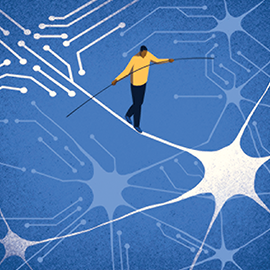 Although ASD is typically a lifelong disorder, treatments and services have been shown to improve symptoms and the ability to function. In 2013, Lopez created Inclusive Sports and Fitness (ISF), a Nassau County, N.Y. based nonprofit that helps children with developmental and intellectual disorders advance their sensorimotor, social, emotional, and cognitive abilities through a targeted exercise program. “We do repetitive activities that teach participants how to move their bodies more effectively,” says Lopez. “That creates new neural pathways that can be transferred to other things.” Ravan, an expert in signal processing, has used EEG to measure brain activity to assess the functional connectivity among different brain regions. Now, she is studying the impaired interactions between brain regions of individuals with ASD to try to evaluate the benefits of the ISF program. She can also use the data supplied by Lopez to develop a machine-learning approach to further improve that understanding.
Although ASD is typically a lifelong disorder, treatments and services have been shown to improve symptoms and the ability to function. In 2013, Lopez created Inclusive Sports and Fitness (ISF), a Nassau County, N.Y. based nonprofit that helps children with developmental and intellectual disorders advance their sensorimotor, social, emotional, and cognitive abilities through a targeted exercise program. “We do repetitive activities that teach participants how to move their bodies more effectively,” says Lopez. “That creates new neural pathways that can be transferred to other things.” Ravan, an expert in signal processing, has used EEG to measure brain activity to assess the functional connectivity among different brain regions. Now, she is studying the impaired interactions between brain regions of individuals with ASD to try to evaluate the benefits of the ISF program. She can also use the data supplied by Lopez to develop a machine-learning approach to further improve that understanding.
Machine learning uses two phases: feature extraction and classification. During feature extraction, the algorithm will extract the discriminating features between two groups. In the classification phase, the algorithm will classify the features into two groups based on the extracted features. In this case, Ravan is using a machine-learning approach to analyze EEG data of children with ASD before and after six weeks of physical and cognitive activities, comparing this with data from a control group of children without ASD. “The goal is to quantify the dominating direction of information flow in the brain,” she says. “This will help us understand the mechanism of treatment and provide clues about the functionality of physical and cognitive therapy in improving ASD.”
Best Practices For Disaster Response
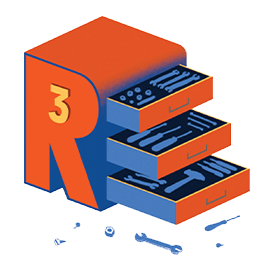
From Hurricane Maria in Puerto Rico to the proliferation of devastating California wildfires, natural disasters are becoming increasingly commonplace. It is imperative that innovative methodologies of post-disaster work that can better suit the needs of communities and work from the ground up continue to be developed. An interdisciplinary group of faculty and staff at New York Institute of Technology are working to develop a new relief model, using lessons learned from Hurricanes Katrina, Sandy, and Maria. The research team, known as R-Cubed (Relief x Reconstruction x Resiliency), includes Farzana Gandhi, M.Arch., AIA, LEED AP, associate professor of architecture; Amy Bra vo, M.A., senior director of international and experiential education; Robert Cody (B.Arch. ’84), associate professor of architecture; Jim Martinez, Ph.D., associate professor of interdisciplinary studies; librarian Diana Moronta; and Nicholas Bloom, Ph.D., professor of urban policy and planning at Hunter College.
Our goal is to be recognized as a hub for interdisciplinary disaster relief expertise in the tri-state area. Because we represent multiple disciplines within a single organization, our approach and solutions are unique and much more comprehensive than what conventionally occurs where competing interests may be involved.
Farzana Gandhi, M.Arch., Associate Professor of Architecture
“Each of us has been involved in post-disaster response in our own field,” says Gandhi, who has extensive experience in sustainable and resilient design at various scales from community spaces, and housing to urban design and infrastructure planning. “But I have often felt like the scope of what I can holistically offer, keeping just within my own disciplinary expertise, falls short in these situations.” Propelled by the aftermath of Hurricane Maria, Gandhi organized R-Cubed as a “disaster-relief collective,” securing a university-sponsored Institutional Support of Research and Creativity (ISRC) grant to fund their efforts. The grant has allowed the group to work together to study posthurricane regions (New Orleans, New York City/New Jersey, and Puerto Rico), evaluate efforts to rebuild and develop resiliencyagainst future storms, and evaluate methodologies and processes that have made the greatest impact.
The group traveled to New Orleans in July 2019, a trip that was cut short due to Hurricane Barry. “Ironically, we lived a bit of what New Orleans faces,” Gandhi says. “It was unexpected but enlightening. We experienced an improved water pump infrastructure that drained knee-deep water back into the lake within the day, but also some continued broken infrastructures, especially in terms of communication. Many people didn’t know where to go or what to do.” Case study research will result in a publication that analyzes best practices and, later, a symposium comprising local experts and collaborators from each site. Ultimately, the group hopes to trademark a unique R-Cubed methodology as a “tool kit” for use in disaster situations. “Our goal is to be recognized as a hub for interdisciplinary disaster relief expertise in the tri-state area,” says Gandhi. “Because we represent multiple disciplines within a single organization, our approach and solutions are unique and much more comprehensive than what conventionally occurs where competing interests may be involved.”
Reducing Supply Chain Risk and Carbon Footprint
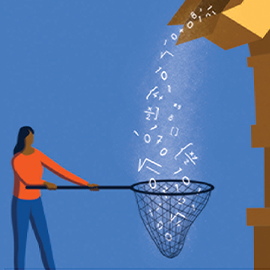 For any manufacturing company, strategic decisions regarding its supply chain can have significant impacts on its ability to manufacture and deliver products. While perhaps not a life-anddeath situation, supply chains form the lifeline of many modern companies. A supply chain—the network of individuals, organizations, and processes involved in the creation and sale of a product—includes the delivery of raw materials from the supplier to manufacturer to distributor to eventual delivery to the end user. In the past decade, companies have focused on cost minimization by reducing their supply base, says Purushottam Meena, Ph.D., associate professor of operations management. “If any disruption occurs across the supply chain network, the goods won’t get to the customer on the promised date of delivery.”
For any manufacturing company, strategic decisions regarding its supply chain can have significant impacts on its ability to manufacture and deliver products. While perhaps not a life-anddeath situation, supply chains form the lifeline of many modern companies. A supply chain—the network of individuals, organizations, and processes involved in the creation and sale of a product—includes the delivery of raw materials from the supplier to manufacturer to distributor to eventual delivery to the end user. In the past decade, companies have focused on cost minimization by reducing their supply base, says Purushottam Meena, Ph.D., associate professor of operations management. “If any disruption occurs across the supply chain network, the goods won’t get to the customer on the promised date of delivery.”
“Disruption” (when one party isn’t able to deliver a product or service to the next party on schedule) can be caused by anything from a hurricane to a transportation strike to an event such as 9/11. Meena, who has conducted extensive research on supply chain disruption, says the most common issue is the inability of the supplier to deliver on time. “Companies need to determine the optimal number of suppliers of a product they need to minimize their disruption risk while maintaining cost,” he says.
Companies need to determine the optimal number of suppliers of a product they need to minimize their disruption risk while maintaining cost.
Purushottam Meena, Ph.D., Associate Professor of Operations Management
Meanwhile, due to government regulation and societal pressure, companies are increasingly focused on carbon emissions involved in the production of their products. “A company may have suppliers across the world supplying raw materials at a cheaper rate. However, depending on the mode of transportation, this cost savings may come with higher carbon emissions,” he says. Ultimately, Meena says, the manufacturer’s goal is to determine how many suppliers and distribution centers are needed in its supply chain network, while minimizing cost and carbon emissions.
To establish the optimal configuration, Meena, along with his research collaborators, developed a mathematical model that uses data mining techniques and artificial intelligence algorithms to solve multiple objectives, taking into consideration factors such as transportation and energy costs, emission levels, and potential disruption events in various countries. With funding from the university, he was able to validate the accuracy of the model, conducting a study evaluating the balance between supply chain risk and carbon emissions of an auto manufacturer. “We demonstrated the validity of the model, which could be used by any manufacturing company,” says Meena.
Low-Cost, Simple HIV Diagnosis
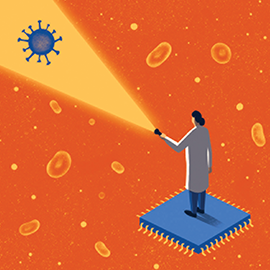
Despite advances in treatment, HIV remains one of the world’s most serious health challenges. According to the World Health Organization (WHO), nearly 5,000 people are infected with HIV each day, with the vast majority in low-income, resource-poor countries where laboratory infrastructure for conventional testing is in short supply. Azhar Ilyas, Ph.D., assistant professor of electrical and computer engineering, is working to develop a device using highly sensitive, refrigeration-free microchip technology to detect HIV in health-care settings. “The goal is a low-cost porous silicon (PSi)-based microchip device that can efficiently detect ultralow concentrations of HIV-related proteins from a finger-prick blood sample,” Ilyas says.
If successful, this research will help advance global efforts to manage HIV and may lead to point-of-care diagnostic devices for other diseases.
Azhar Ilyas, Ph.D., Assistant Professor of Electrical and Computer Engineering
At present, diagnosis relies on use of an expensive flow cytometer, which requires a trained technician. And, because reagents used during flowcytometry must be stored at low temperatures, reliable electricity and refrigeration are necessary. “The fundamental challenge in reducing the prevalence of HIV is having easy access to testing,” says Ilyas, whose research combines biomedical engineering, nanoscience, and nanotechnology. In 2016, he established the university’s Bio-Nanotechnology and Biomaterials Laboratory, which focuses in part on research related to point-of-care disease diagnostics. “Because most diseases originate at molecular or cellular levels, nanotechnology can provide tools to investigate the presence of potentially fatal diseases at a very small scale,” says Ilyas, who has also developed point-ofcare devices for cancer detection.
This project was prompted by the WHO’s declaration for the urgent need for a handheld, point-of-care, reliable, and low-cost HIV detection device in resource-scarce regions. Ilyas’s device would use a porous silicon biochip to optically detect very small concentrations of HIV proteins in the blood. “Early detection of HIV improves outcomes for patients and reduces the risk of transmission,” he says. “If successful, this research will help advance global efforts to manage HIV and may lead to point-of-care diagnostic devices for other diseases.”
Exploring New Pathways to Combat Alzheimer’s
Alzheimer’s disease—an incurable, progressive, neurodegenerative disease—is also the most common form of senile dementia. While limited treatment options are now available to target Alzheimer’s symptoms, there is little that can be done to modify the progression of the disease. Jole Fiorito, Ph.D., assistant professor of biological and chemical sciences who specializes in medicinal chemistry, hopes to change that. Her current work explores biological pathways not targeted by current Alzheimer’s medications. In previous research with Ottavio Arancio, M.D., Ph.D., at Columbia University, Fiorito helped develop molecules to improve the nitric oxide signaling pathway that is found to be impaired in Alzheimer’s patients.
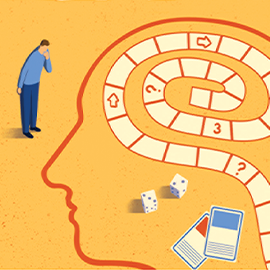 “There’s a cascade of proteins and enzymes working one after the other that in the end lead to an improvement of learning and memory.” Specifically, when the molecule cGMP is increased, so is learning and memory. Fiorito is targeting the enzyme that degrades cGMP in patients with Alzheimer’s disease using a novel PDE5 inhibitor she’s designing in her lab. PDE5 inhibitors cause basal dilation and are commonly used in drugs for erectile dysfunction and pulmonary hypertension. “Developing molecules that interact with a well-known target for other diseases is advantageous because it’s been shown to be safe,” she says.
“There’s a cascade of proteins and enzymes working one after the other that in the end lead to an improvement of learning and memory.” Specifically, when the molecule cGMP is increased, so is learning and memory. Fiorito is targeting the enzyme that degrades cGMP in patients with Alzheimer’s disease using a novel PDE5 inhibitor she’s designing in her lab. PDE5 inhibitors cause basal dilation and are commonly used in drugs for erectile dysfunction and pulmonary hypertension. “Developing molecules that interact with a well-known target for other diseases is advantageous because it’s been shown to be safe,” she says.
Fiorito is now exploring the PDE5 inhibitor in combination with another enzyme shown to improve learning and memory, histone acetyltransferase (HAT). “To my knowledge, these two targets have never been explored before in a combination treatment,” she says. “My idea is to develop molecules that can act on two different targets that impact the disease at the same time in order to have a greater effect than each on their own.” Fiorito hopes findings from her proof-of-concept studies will attract external funding and ultimately lead to the goal of developing an effective treatment for Alzheimer’s disease. “I’m at the very beginning,” she says. “I have a long way to go.”
This article originally appeared in the Fall 2019 issue of New York Institute of Technology Magazine.
By Renée Gearhart Levy
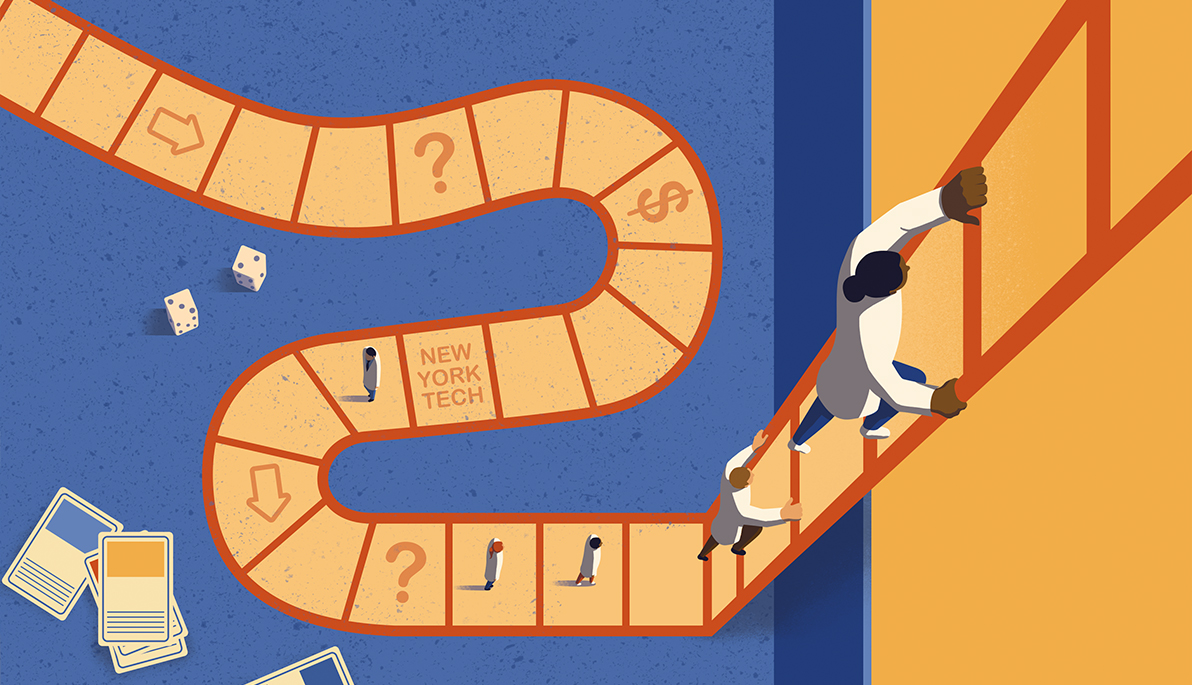

_Thumb.jpg)

